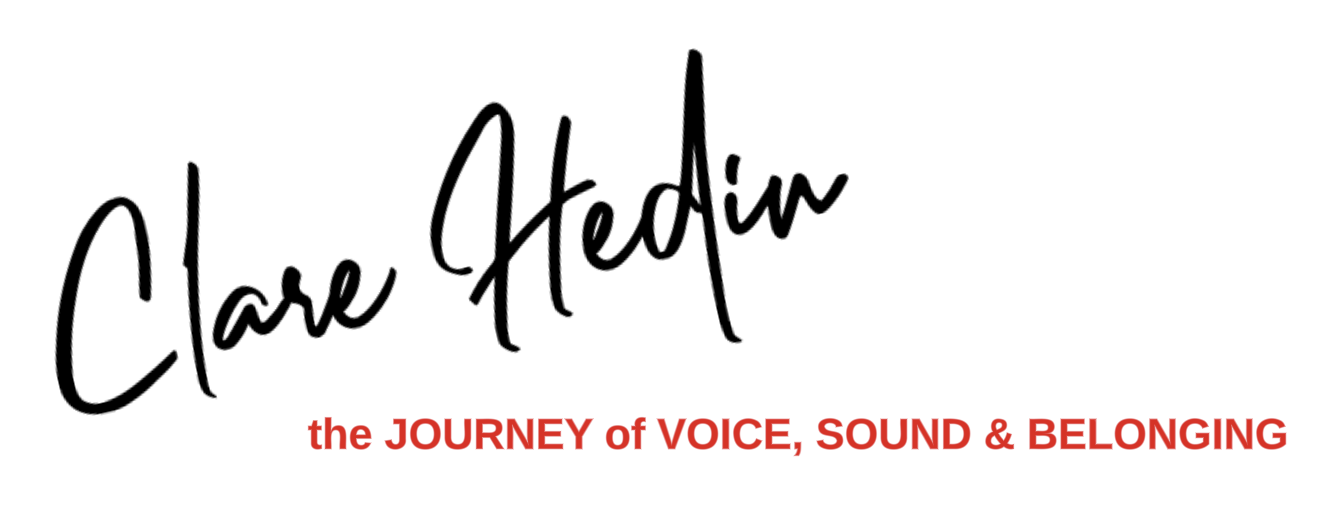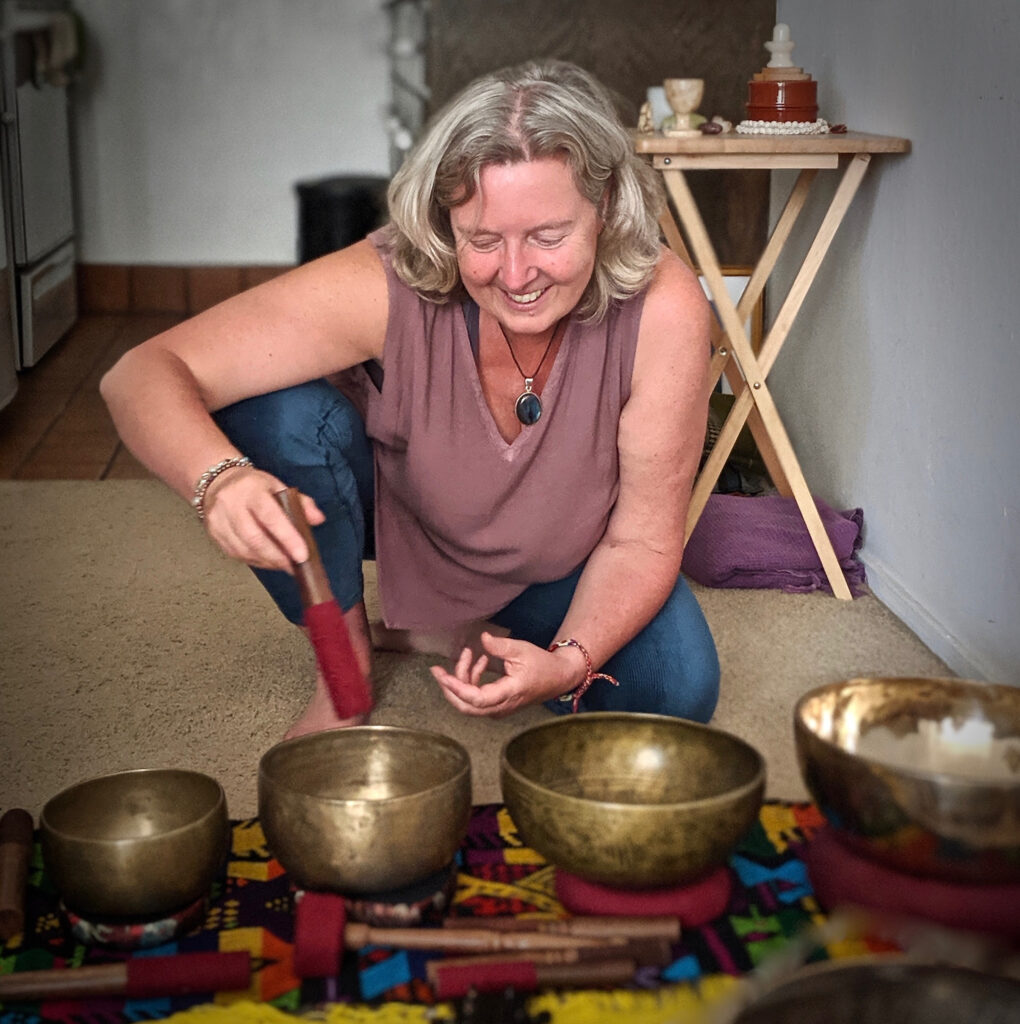Accessing Creativity
 Clare Hedin – Artist, Musician, Collaborator, Improvisor – is an expert on creativity and transformative approaches to innovating new ideas. The insights below address the question ‘How do we access our creativity on demand?‘ given to Clare at an advertising industry talk hosted by IPA, 24 March. This is her response. (Email: clare@clarehedin.com or BOOK A FREE HALF HOUR CONSULT NOW. Clare can witness your process and help you evolve it in real-time.
Clare Hedin – Artist, Musician, Collaborator, Improvisor – is an expert on creativity and transformative approaches to innovating new ideas. The insights below address the question ‘How do we access our creativity on demand?‘ given to Clare at an advertising industry talk hosted by IPA, 24 March. This is her response. (Email: clare@clarehedin.com or BOOK A FREE HALF HOUR CONSULT NOW. Clare can witness your process and help you evolve it in real-time.
What are the steps to make a creative brainstorm work? Or, put another way,
what’s the trick to having a group creative orgasm on a deadline?
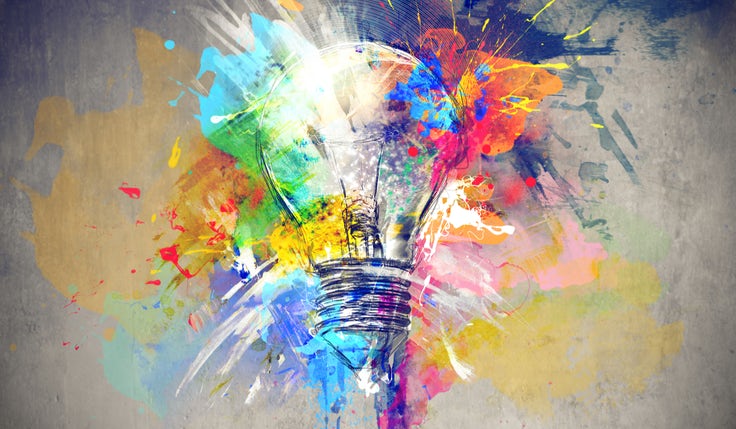
Let’s talk about sex. The title questions around commanding when and how creativity happens are a bit like asking a shy introvert to describe how to have an effective, guaranteed, orgasm in a short time frame, with people watching… it’s a little tricky to expect a formulaic answer. There are various things we can say about conditions but ultimately it is about a state of mind and body that we are in that actually allows that magical moment to come forward, through an ongoing invitation of the senses, the ambiance, the mood, and the frame of mind, as well as the external sounds, temperature, time-frame, comfortability, focus and, of course, who we are with.
If we are relaxed and focused in the moment, we are more likely to experience the kind of sensation that radiates out with liberation and, similarly, the kind of creative exchanges that uplift, stimulate and expand our sense of heightened presence, attention, and engagement. It’s not so much a question of mechanics as attitude, and the perceived elusiveness of either may actually be misleading, since we do have control over our inner and outer conditions. And we all know how much we radiate after a job well done!
In a meeting of people seeking more confident access to their own creativity, in one of the UK’s most renowned creative industries – Advertising – I was asked about the magical steps for creative results, and how to generate reliable access to them. I had to think about this. I was a bit stumped. I later came to see that being creative is a paradigm, a way of life, a practice that naturally gives us access to more connectivity. It’s a journey as well as a destination.
There are times when we can choose to be precise and rational, although the rational doesn’t have to be experienced as purely mechanical (it is inherently far more sexy and exciting than that). There are also times when we can let our minds wander, just to see where they go, and then follow them there. Below are some experiences that I have happened across over my many years of creative focus – and maybe some of them can work for you, too.
Here’s an initial proposal: If we explore different states of being, and different frames of mind, we can access different ways of perceiving an issue and its corresponding messages. If we can listen, we can create, and not just create, but innovate.
Observer/Experiencer
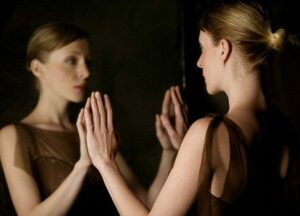
Our minds know what to do, where to go, and where to find answers. Puzzles are fun for a mind – it’s a pattern seeker. In order to have the mind provide us with information and ideas that might be usable, we need to know the territory we are swimming in. If your project is for a particular audience – or target market – then we need to know who they are, what they care about, what they think about, what they do, what do they worry about? Their territory needs to become our territory. If you only did this however, you might fall into the trap of manipulating without heart. In order to be fully human, we need to find the connecting stories within the events that we genuinely care about – where are we in common, where do we share similar heart? How do we relate to this other person’s situation? Where do we feel touched, and moved? What is the story that connects us so that we understand, relate to, and care? Your humanity is your connectivity.
Research as a modality – reading the information holistically
![]() I find that the more data I put into my mind on a particular subject the more fun my mind has, and this can be wildly lateral, e.g. do a 3-word google search and see what populates at the top of the page, then follow the top 3 links to see what pops up next (you can also try this with an image search). Let that information wash over you, soften your gaze and focus, and then notice what is happening inside the body of your own imagination – watch it, track it, jot it all down; both the internal and the external; feelings, thoughts and sensations. Follow your curiosity, where the discoveries and their implications light you up. Start joining the dots between these search pathways. This is actually what the observer/experiencer relationship is all about. The more my mind, emotions, and sensory self can take in, between them, they filter and orient/organize for relevance and possibilities. This creates a vibe of excitement and motion. When I let them interact, I don’t actually have to do anything except listen, watch and track the energy flow for information and prompts – it does it all spontaneously, so long as I participate with curiosity.
I find that the more data I put into my mind on a particular subject the more fun my mind has, and this can be wildly lateral, e.g. do a 3-word google search and see what populates at the top of the page, then follow the top 3 links to see what pops up next (you can also try this with an image search). Let that information wash over you, soften your gaze and focus, and then notice what is happening inside the body of your own imagination – watch it, track it, jot it all down; both the internal and the external; feelings, thoughts and sensations. Follow your curiosity, where the discoveries and their implications light you up. Start joining the dots between these search pathways. This is actually what the observer/experiencer relationship is all about. The more my mind, emotions, and sensory self can take in, between them, they filter and orient/organize for relevance and possibilities. This creates a vibe of excitement and motion. When I let them interact, I don’t actually have to do anything except listen, watch and track the energy flow for information and prompts – it does it all spontaneously, so long as I participate with curiosity.
Stories vs. Data
 Data needs stories. Data without stories will not have much of an impact on us, the process, or the audience. Just look at all the evidence for our existential climate crisis and yet the data doesn’t have enough impact to create a coherent response to a shared dilemma. If we ourselves are not woven somehow into a data-driven story, then we can find it hard to care, respond, or act with relevance. We need to see and feel ourselves in the data, it has to lift off the binary page. If we don’t feel the relevance of the information, we tend not to act. Data alone doesn’t sell ideas or products en masse but data as story is different – then it comes alive in us, and we come alive by being engaged with it. When we look at data, we are looking at the freeze-dried version of something – the menu, the ingredients. When we cook it and eat it, we become the data – it stories inside of us.
Data needs stories. Data without stories will not have much of an impact on us, the process, or the audience. Just look at all the evidence for our existential climate crisis and yet the data doesn’t have enough impact to create a coherent response to a shared dilemma. If we ourselves are not woven somehow into a data-driven story, then we can find it hard to care, respond, or act with relevance. We need to see and feel ourselves in the data, it has to lift off the binary page. If we don’t feel the relevance of the information, we tend not to act. Data alone doesn’t sell ideas or products en masse but data as story is different – then it comes alive in us, and we come alive by being engaged with it. When we look at data, we are looking at the freeze-dried version of something – the menu, the ingredients. When we cook it and eat it, we become the data – it stories inside of us.
Intentional traveling
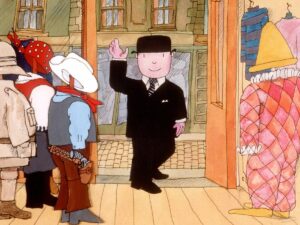 I think a lot. I ruminate, and information dances in my mind populating my sensory and cognitive awareness with ideas and ‘what-if’s’. I really enjoy the experience of ‘going in’ i.e. traveling with my imagination. If you remember Mr. Ben – the children’s programme from the early 70’s – he would go into the fancy dress shop and each time he’d take on a new outfit, a new possibility, go into the changing room, and become engaged in an adventure, not of his own making. He didn’t know what it would be, and he didn’t know where he would land upon dressing up. He had his routines of a) going into the shop, b) interacting with the shopkeeper, c) picking an outfit with his help, d) having his adventure, and e) being willingly escorted back to ‘reality’ by the magical shopkeeper. Our routines can invite the possibility of a creative interaction – set the stage for it to come and join us – you could even think of it as a ritual. The thing that is particularly interesting is that Mr. Benn was able to leave the adventure without longing but with a lasting appreciation (more later, on appreciation). He did not negotiate for a particular experience or outcome – once he had chosen his outfit he went with the flow and interacted with the unfolding story in a way that was positive for the setting, not merely for himself – and he co-created the story through his participation. His openness and his willingness to engage positively with whatever was presented, once he committed, was his creativity – inspired by his desire to help.
I think a lot. I ruminate, and information dances in my mind populating my sensory and cognitive awareness with ideas and ‘what-if’s’. I really enjoy the experience of ‘going in’ i.e. traveling with my imagination. If you remember Mr. Ben – the children’s programme from the early 70’s – he would go into the fancy dress shop and each time he’d take on a new outfit, a new possibility, go into the changing room, and become engaged in an adventure, not of his own making. He didn’t know what it would be, and he didn’t know where he would land upon dressing up. He had his routines of a) going into the shop, b) interacting with the shopkeeper, c) picking an outfit with his help, d) having his adventure, and e) being willingly escorted back to ‘reality’ by the magical shopkeeper. Our routines can invite the possibility of a creative interaction – set the stage for it to come and join us – you could even think of it as a ritual. The thing that is particularly interesting is that Mr. Benn was able to leave the adventure without longing but with a lasting appreciation (more later, on appreciation). He did not negotiate for a particular experience or outcome – once he had chosen his outfit he went with the flow and interacted with the unfolding story in a way that was positive for the setting, not merely for himself – and he co-created the story through his participation. His openness and his willingness to engage positively with whatever was presented, once he committed, was his creativity – inspired by his desire to help.
Timing and Non-attachment
 We must hold the ideas that come as visitors, guests – hold them lightly, offer them a seat, a cuppa (or a whisky), but don’t lock them in the house. They didn’t come to live, they came to visit. Treat them lightly and with respect. Ideas do not belong to us, they visit us – if we become good hosts, then we will not only enjoy their visit but we will likely have more of them. When did you last ‘require’ someone to visit? How well did that go? We can no more control these visits than what happens in them but we can make ourselves a good place to visit. Our minds and our attitudes are these places to visit. Being mindfully aware of the energy is part of being a good host – if we are having a good session and then suddenly the room feels ‘done’, respect that and take a break. If a process feels done, let it be done… for now. Go for a walk, refresh yourself, then come back. If the energy is gone you cannot ‘will’ it back (you may indeed undo the progress you have made) – you need to work on its terms and switch the scene to loosen up the energy again.
We must hold the ideas that come as visitors, guests – hold them lightly, offer them a seat, a cuppa (or a whisky), but don’t lock them in the house. They didn’t come to live, they came to visit. Treat them lightly and with respect. Ideas do not belong to us, they visit us – if we become good hosts, then we will not only enjoy their visit but we will likely have more of them. When did you last ‘require’ someone to visit? How well did that go? We can no more control these visits than what happens in them but we can make ourselves a good place to visit. Our minds and our attitudes are these places to visit. Being mindfully aware of the energy is part of being a good host – if we are having a good session and then suddenly the room feels ‘done’, respect that and take a break. If a process feels done, let it be done… for now. Go for a walk, refresh yourself, then come back. If the energy is gone you cannot ‘will’ it back (you may indeed undo the progress you have made) – you need to work on its terms and switch the scene to loosen up the energy again.
Conditions
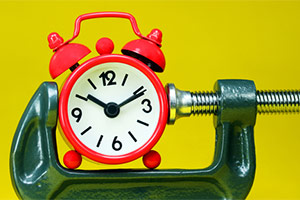 1. Time, knowing how long you have, i.e. a deadline, can stimulate creative activity – the pressure can excite the space (just think of the physics of pressure in a space and what it does to molecules). I could say that if you’re not panicking your not going somewhere new. Time gives our process a ‘shape’, a parameter, a limitation which forces us to focus deeply and quickly. It can be tremendously powerful if you can keep your head, and focus with discipline. 2. Space, how we physically arrange ourselves will generate more/less/neutral energy, i.e. don’t put your chairs in a line, don’t have a hierarchy in the way you sit, make sure you can see each other easily and that you don’t exclude anyone with your body language or the arrangement of the room – make it easy for someone to speak up, be in/create a room where one can express oneself; inclusion => input. 3. Energy: Stasis – remember to break up any feeling of ‘flow block’ by doing unexpected things; have fun, exaggerate, make strange sounds (!), agree to change the subject for a moment, stop being formal, and relax into it. 4. Mind; keep an eye on it (!) – if it’s constantly judging you or harassing you it will impede your progress. If it’s busy in the wrong kind of way try saying ‘I see you, I hear you, thanks for coming, have a seat.’ and then move on. If you try arguing with your mind, it’s already won. 5. Curiosity – an essential element for any creative journey. Time, Space, and Energy are part of your creative process but curiosity really is king – it’s what gets your conversation rolling and it’s the superior part of your mind for selective, intelligent, creative development. It may even be teleological in nature. (for more on that idea book a chat)
1. Time, knowing how long you have, i.e. a deadline, can stimulate creative activity – the pressure can excite the space (just think of the physics of pressure in a space and what it does to molecules). I could say that if you’re not panicking your not going somewhere new. Time gives our process a ‘shape’, a parameter, a limitation which forces us to focus deeply and quickly. It can be tremendously powerful if you can keep your head, and focus with discipline. 2. Space, how we physically arrange ourselves will generate more/less/neutral energy, i.e. don’t put your chairs in a line, don’t have a hierarchy in the way you sit, make sure you can see each other easily and that you don’t exclude anyone with your body language or the arrangement of the room – make it easy for someone to speak up, be in/create a room where one can express oneself; inclusion => input. 3. Energy: Stasis – remember to break up any feeling of ‘flow block’ by doing unexpected things; have fun, exaggerate, make strange sounds (!), agree to change the subject for a moment, stop being formal, and relax into it. 4. Mind; keep an eye on it (!) – if it’s constantly judging you or harassing you it will impede your progress. If it’s busy in the wrong kind of way try saying ‘I see you, I hear you, thanks for coming, have a seat.’ and then move on. If you try arguing with your mind, it’s already won. 5. Curiosity – an essential element for any creative journey. Time, Space, and Energy are part of your creative process but curiosity really is king – it’s what gets your conversation rolling and it’s the superior part of your mind for selective, intelligent, creative development. It may even be teleological in nature. (for more on that idea book a chat)
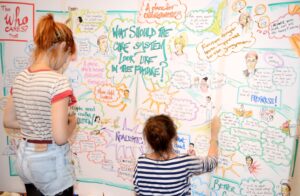
An example of conducive physical space: I love my ideation wall – it’s 10’ x 5’. I was writing a draft of a screenplay once, with a friend, and we both sat at an angle to the wall as we chatted to each other, so the wall was part of a triadic conversation. We thought the components of the story and its characters out loud, as they arose in our minds, and we engaged with our imaginations without judgment (it definitely helps if you enjoy, and trust, each other)… we played. As we collaborated and sparked ideas off of each other – building the ideas through each other – we would jump up and write/draw on the wall (without correction from each other but suggestions to add, or rearrange, were fine). Then, taking a step back, we could see the overall wall and see something that had relationships in it – it made a story, we made a story just through feeling the flow of ideas, and we had fun!
Ideation & Process
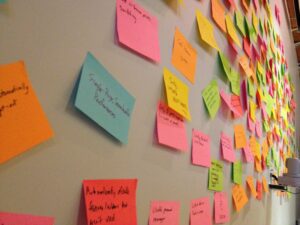 Things arises from new input and allowing. The Kelley brothers (Ideo.com) put lots of post-it notes up on the wall so they can move them around and orient the ideas and thoughts in relation to each other, in new ways, to see things from multiple perspectives. I use my wall (10’ x 5’) to discover relationships and possibilities. I don’t presume to know the answer – I treat the process like an oracle of information coming to inform me and then I trust myself to do something with it. Learn your style. Discover your RESI bias (Rational, Emotional, Sensory, Intuitive knowing) so you can become familiar with how you operate most naturally because that will be the most efficient way for you. When it’s happening energy will start to pick up like the wind lifting the leaves and branches of a tree and it will lift you with it.
Things arises from new input and allowing. The Kelley brothers (Ideo.com) put lots of post-it notes up on the wall so they can move them around and orient the ideas and thoughts in relation to each other, in new ways, to see things from multiple perspectives. I use my wall (10’ x 5’) to discover relationships and possibilities. I don’t presume to know the answer – I treat the process like an oracle of information coming to inform me and then I trust myself to do something with it. Learn your style. Discover your RESI bias (Rational, Emotional, Sensory, Intuitive knowing) so you can become familiar with how you operate most naturally because that will be the most efficient way for you. When it’s happening energy will start to pick up like the wind lifting the leaves and branches of a tree and it will lift you with it.
Traveling inward

‘Go in’. What does this mean? It means I anticipate a process of engagement that I need to listen for… inside myself. I start to pay attention for signs of energy and spark. It is a receptive mode and yet, at the same time, I am traveling there with volition – I am acting. As an internal state shift, it may not be so obvious to anyone outside of me, except I might stop talking for a few minutes and then suddenly explode into ideas. In a group, you can choose to do this together. If you’re bumping heads and getting no ‘juice’ try going quiet together and breathing out loud for a moment, or even singing, making strange sounds (believe me, it works – that’s why I’ve said it twice now)… change the vibe. If you’re in a ‘movement void’ try holding up a picture of something non-personal (e.g. a picture of a camel, or a meadow, a clown) and just brainstorm for a moment on what you see – no censorship, no analysis, no editing, don’t even use it for the end product, just use it for the shift of attention. Let your mind run – that’s what it’s designed to do, to ideate. Details can come later.
Solo vs. Group/Yes vs. No
 When I work solo, it’s easy – nobody can aggravate me, no one can contradict my process or say ‘the wrong thing’ to distract or upset me. However, working with a group is a distinct opportunity and challenge – it just needs some ground rules e.g. maybe eliminate the word ‘no’ for the duration of the meeting. When someone says it, they put a penny in the jar, or have to go and make the next round of teas and coffees (make it something fun). We are learning new habits here… of saying yes. If all we say is yes, instead of no (even just for a while), we generate. Instead of ‘no’ try using ‘I prefer’ ‘I’m thinking’ ‘how about…?’ – ‘no’ has a finality to it that stops the development of ideas – it’s an energetic ending. Even if we are not versed in energetic language, we are versed in a daily experience of it. It’s called ‘subtle energy’ but it’s not that subtle when you can feel it; it’s real, and visceral. Energy motions ideas, mind motions energy.
When I work solo, it’s easy – nobody can aggravate me, no one can contradict my process or say ‘the wrong thing’ to distract or upset me. However, working with a group is a distinct opportunity and challenge – it just needs some ground rules e.g. maybe eliminate the word ‘no’ for the duration of the meeting. When someone says it, they put a penny in the jar, or have to go and make the next round of teas and coffees (make it something fun). We are learning new habits here… of saying yes. If all we say is yes, instead of no (even just for a while), we generate. Instead of ‘no’ try using ‘I prefer’ ‘I’m thinking’ ‘how about…?’ – ‘no’ has a finality to it that stops the development of ideas – it’s an energetic ending. Even if we are not versed in energetic language, we are versed in a daily experience of it. It’s called ‘subtle energy’ but it’s not that subtle when you can feel it; it’s real, and visceral. Energy motions ideas, mind motions energy.
What, not How
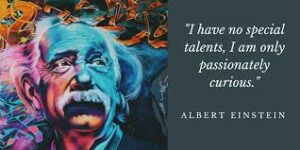 Do not worry about ‘how’ a project will happen as the answer to that typically resides in the ‘what’. When you tune in, you can start to feel ideas coming towards you. A truly creative experiencing state needs to be an open and anticipatory vibe. Try closing your eyes and saying ‘hello’ inside yourself as if there’s someone/thing waiting to help you. Because there is. There is something that exists within us that is connected to something bigger than ourselves. When we connect to that we connect to bigger ideas and possibilities – unexpected links and associations. If you worry about how, before you even know what you are going to create, you are riding a bicycle with the brakes on. Being caught in the doubt of how you will manifest the idea interrupts the idea from fully presenting itself – it’s an ‘inhibitor energy’. Trust the idea and it will show you the way.
Do not worry about ‘how’ a project will happen as the answer to that typically resides in the ‘what’. When you tune in, you can start to feel ideas coming towards you. A truly creative experiencing state needs to be an open and anticipatory vibe. Try closing your eyes and saying ‘hello’ inside yourself as if there’s someone/thing waiting to help you. Because there is. There is something that exists within us that is connected to something bigger than ourselves. When we connect to that we connect to bigger ideas and possibilities – unexpected links and associations. If you worry about how, before you even know what you are going to create, you are riding a bicycle with the brakes on. Being caught in the doubt of how you will manifest the idea interrupts the idea from fully presenting itself – it’s an ‘inhibitor energy’. Trust the idea and it will show you the way.
Dynamic Emergence
 Novelty seeks to arise creatively through interaction – and it needs our attention to do so. When we are paying attention, fully conscious of the generative energy of creativity wanting to move through us, we become alert and ready. Two elements of awareness can help with connecting to this kind of freedom. Knowing that 1. Nothing is fixed, and 2. Energy waits to be noticed.
Novelty seeks to arise creatively through interaction – and it needs our attention to do so. When we are paying attention, fully conscious of the generative energy of creativity wanting to move through us, we become alert and ready. Two elements of awareness can help with connecting to this kind of freedom. Knowing that 1. Nothing is fixed, and 2. Energy waits to be noticed.
Dynamics create reality. Paying attention helps us navigate that reality. Being creatively dynamic means allowing ourselves fluidity, flow and focus. Focus on whatever brings your excitement energy level up. If you are working on a project that will relate to someone else, try imagining that person for real, give them details, imagine feeling their feelings, imagine their dreams/wants/needs, imagine how it feels for them to meet those needs – draw from a place of ‘yes, and’ on their behalf… in other words, become them. Then all you have to do is build the road to get there. Ideation is easier once you are in motion, so get in motion.
Confidence & Connection
 These grow, like anything, with practical use. We cannot decide on the pace of this, we can just dive in, develop things and appreciate our growing sense of confidence and connection to our creativity things happen. We can also be fully human and share our disappointment and frustration when they don’t. If you can empathise with yourself and each other when you’re having a ‘hard day’ or a ‘frustrating moment’, creatively, then you have something in common. You don’t have to stay there. In fact, it is more likely that by noticing you speed up a shift, and deepen your connection to the something that you are seeking, realizing the potential by changing the energy of the moment. As it says above, energy waits to be noticed. Don’t underestimate that your honesty (or authenticity) can be the gateway that frees up your energy and boosts your confidence. And, remember, energy noticed, alchemises – and the more times you experience that, the more your confidence grows. You have to trade in your comfort for your progress.
These grow, like anything, with practical use. We cannot decide on the pace of this, we can just dive in, develop things and appreciate our growing sense of confidence and connection to our creativity things happen. We can also be fully human and share our disappointment and frustration when they don’t. If you can empathise with yourself and each other when you’re having a ‘hard day’ or a ‘frustrating moment’, creatively, then you have something in common. You don’t have to stay there. In fact, it is more likely that by noticing you speed up a shift, and deepen your connection to the something that you are seeking, realizing the potential by changing the energy of the moment. As it says above, energy waits to be noticed. Don’t underestimate that your honesty (or authenticity) can be the gateway that frees up your energy and boosts your confidence. And, remember, energy noticed, alchemises – and the more times you experience that, the more your confidence grows. You have to trade in your comfort for your progress.
Wisdom of systems
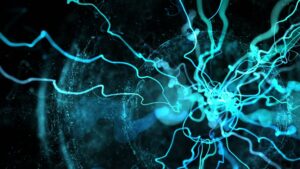 Although we can know things individually, we know even more collectively. There is an inherent wisdom that we have as a group, if we can find it. Systems pattern reality and allow information to emerge whilst we discern what is usable data. How we come to the creative process as a group will influence what is possible next and how we come to a group as an individual affects the group potential. Be willing to dig deep, listen, and try out new connections. When we create, whether alone or with others, if we tap into life’s knowledge network, we can access a deeper well of resources, possibly beyond human! A healthy living system is reliably self-generating, self-maintaining, self-organizing, relationship-based, and purposeful – bigger than the sum of its parts. As we work together we can learn to trust the process we discover that works for us and become storytellers. The storyteller in each of us accesses the story/information web using the different ways of knowing that we know we have; Rational, Emotional, Sensory, and Intuitive. These ground us and give us access to the numinous, and the numinous to the novel. To be creative is to story relationships in new ways, to find solutions through new arrangements of elements. We can borrow from one another and from greater systemic wisdom. Being (in) a system is a collective advantage that can generate collective wisdom… when we trust the process, we trust the system and new constellations of ideas can emerge.
Although we can know things individually, we know even more collectively. There is an inherent wisdom that we have as a group, if we can find it. Systems pattern reality and allow information to emerge whilst we discern what is usable data. How we come to the creative process as a group will influence what is possible next and how we come to a group as an individual affects the group potential. Be willing to dig deep, listen, and try out new connections. When we create, whether alone or with others, if we tap into life’s knowledge network, we can access a deeper well of resources, possibly beyond human! A healthy living system is reliably self-generating, self-maintaining, self-organizing, relationship-based, and purposeful – bigger than the sum of its parts. As we work together we can learn to trust the process we discover that works for us and become storytellers. The storyteller in each of us accesses the story/information web using the different ways of knowing that we know we have; Rational, Emotional, Sensory, and Intuitive. These ground us and give us access to the numinous, and the numinous to the novel. To be creative is to story relationships in new ways, to find solutions through new arrangements of elements. We can borrow from one another and from greater systemic wisdom. Being (in) a system is a collective advantage that can generate collective wisdom… when we trust the process, we trust the system and new constellations of ideas can emerge.
Listen for Novelty
 When we listen we can take things in with more focus. Being present to each moment is how we get to the next moment, in a new way, perhaps even to a new you. Playing games can help with this. Try a version of an *‘Art Spark’ with yourself! (An art spark is where you see something artistic and respond spontaneously – guidelines below)
When we listen we can take things in with more focus. Being present to each moment is how we get to the next moment, in a new way, perhaps even to a new you. Playing games can help with this. Try a version of an *‘Art Spark’ with yourself! (An art spark is where you see something artistic and respond spontaneously – guidelines below)
Focus to notice: Wherever you are right now, let your gaze fall on something and look at it… ask it questions as if it is intelligent e.g. ‘Who made you? What was the person needing in order to ever think of making you – what were they going through? What qualities do you have? Look at all the minerals that went into making you – how old was that earth that you came from… what were the conditions there?’, notice its shape, trace the lines of it in your mind, ‘what do these patterns make me think of (e.g. ‘The moon’? A frog?)’. Being open and curious, as if you are seeing something for the first time, allows your mind to connect to your body and emotions. You need to connect if you want to be inspired by what presents itself to you. It may seem quiet when you first try this but have faith, like any unblocked river, the trickle will become more of a flowing stream in time. Water will travel wherever there is an unblocked pathway.
Brainstorming
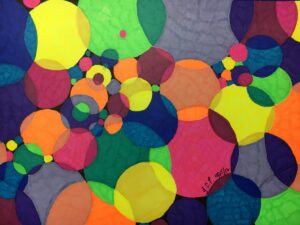 Brainstorming is a mutual celebration of discovering the unknown and turning those possibilities into probabilities. We get to participate in the creation of some kind of progression, co-generate new realities. First, there’s the invention, then the improvement, and then the innovation. And, in time, it will change again. Perhaps, instead of thinking of ‘steps to be creative’ we should be thinking about the fact that we’re thinking about being creative. Just by noticing what is, we transition from standing on the ground, to lifting off the ground, seeing the view a little bit differently, and reaching out to make new connections between things. Look for the energy. Life is constantly perpetuating itself, and how we engage with that makes us part of life too. One thing about brainstorming is not being attached to our ideas and letting them flow when they come. Being ‘available’ to that is typically considered being in an alpha brainwave state. Your brain has a happy place; alpha!
Brainstorming is a mutual celebration of discovering the unknown and turning those possibilities into probabilities. We get to participate in the creation of some kind of progression, co-generate new realities. First, there’s the invention, then the improvement, and then the innovation. And, in time, it will change again. Perhaps, instead of thinking of ‘steps to be creative’ we should be thinking about the fact that we’re thinking about being creative. Just by noticing what is, we transition from standing on the ground, to lifting off the ground, seeing the view a little bit differently, and reaching out to make new connections between things. Look for the energy. Life is constantly perpetuating itself, and how we engage with that makes us part of life too. One thing about brainstorming is not being attached to our ideas and letting them flow when they come. Being ‘available’ to that is typically considered being in an alpha brainwave state. Your brain has a happy place; alpha!
Capturing moments and ideas (alpha states)
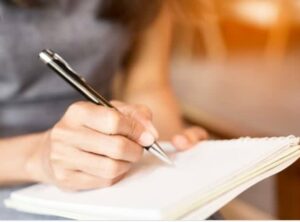 Our minds when relaxed and alert are in a creative alpha state – we can get into that state with some simple techniques. Here’s one: Keep a small pen and pad close by, or your phone’s voice recorder (whichever works best for you and whatever you will remember to come back to). Anytime you have ‘wandering thoughts’ that intrigue you or inspire you, jot them down by writing or recording them. Let yourself notice your energy as you do this. You are looking for a ‘tingly’, expanding, exciting curiosity, and a freeing feeling… a feeling of empowerment – see if you can notice it happening in your body. Also, look for the ‘landing pad of your mind opening’ (think helicopter pad; your mind ready, as an invitation). This mind/body expansion is the state you will be in when you are receiving inspirational ideas that seem to know exactly what you need – more than you do! As you make the space ready, both internally and externally, ideas will come. Going for a walk in nature, or to a new environment e.g. a fairground, a marine mammal center, a race track, a homeless shelter, help serve food, go to an art gallery; create an opportunity to get out of your routines, out of your rational mind and let your body take you somewhere – your mind will catch up and join in. Change your environment to become ready and open to new incoming information.
Our minds when relaxed and alert are in a creative alpha state – we can get into that state with some simple techniques. Here’s one: Keep a small pen and pad close by, or your phone’s voice recorder (whichever works best for you and whatever you will remember to come back to). Anytime you have ‘wandering thoughts’ that intrigue you or inspire you, jot them down by writing or recording them. Let yourself notice your energy as you do this. You are looking for a ‘tingly’, expanding, exciting curiosity, and a freeing feeling… a feeling of empowerment – see if you can notice it happening in your body. Also, look for the ‘landing pad of your mind opening’ (think helicopter pad; your mind ready, as an invitation). This mind/body expansion is the state you will be in when you are receiving inspirational ideas that seem to know exactly what you need – more than you do! As you make the space ready, both internally and externally, ideas will come. Going for a walk in nature, or to a new environment e.g. a fairground, a marine mammal center, a race track, a homeless shelter, help serve food, go to an art gallery; create an opportunity to get out of your routines, out of your rational mind and let your body take you somewhere – your mind will catch up and join in. Change your environment to become ready and open to new incoming information.
Transformation through arts
 We are an environment – an environment that feels, senses, and experiences thinking and thoughts. As an environment, we must take care of ourselves and practice our awareness. This is where arts help us. Using any form of art (other people’s or our own) can help us access parts of ourselves that are less ‘day-to-day’ and more of an ‘arc of becoming.’ Using music and dance (crazy or slow), art, poetry (representational or impressionistic), graffiti or tagging, can help us recognize our true and inherent value and our deep belongingness. From that place, creativity emits a radar of wonder and possibilities that are alive and efficient. We are inspired to action by the creative force – we need to dance with it to bring it in, so listen for its rhythm, pace, and timing. This is a happily contagious state, just as anger can be. Ideas exist everywhere – when we do the same, we have constant access to the numinous and the timely.
We are an environment – an environment that feels, senses, and experiences thinking and thoughts. As an environment, we must take care of ourselves and practice our awareness. This is where arts help us. Using any form of art (other people’s or our own) can help us access parts of ourselves that are less ‘day-to-day’ and more of an ‘arc of becoming.’ Using music and dance (crazy or slow), art, poetry (representational or impressionistic), graffiti or tagging, can help us recognize our true and inherent value and our deep belongingness. From that place, creativity emits a radar of wonder and possibilities that are alive and efficient. We are inspired to action by the creative force – we need to dance with it to bring it in, so listen for its rhythm, pace, and timing. This is a happily contagious state, just as anger can be. Ideas exist everywhere – when we do the same, we have constant access to the numinous and the timely.
Magic, Appreciation, and Alchemy
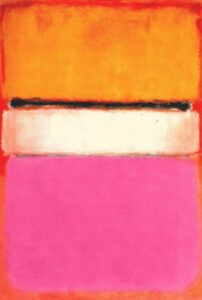 Humans exist to perform transformative acts, as well as self-maintaining acts, according to our living system-ness. By design we are creative and we are extremely capable. When we need to shift our state, we have multiple arts or mindfulness practices that we can use as inputs to inspire outputs. Going to a contemporary gallery, looking at an image, gazing at a flower or an act of kindness serve us – appreciating anything turns us into attractors.
Humans exist to perform transformative acts, as well as self-maintaining acts, according to our living system-ness. By design we are creative and we are extremely capable. When we need to shift our state, we have multiple arts or mindfulness practices that we can use as inputs to inspire outputs. Going to a contemporary gallery, looking at an image, gazing at a flower or an act of kindness serve us – appreciating anything turns us into attractors.
Appreciation is the energy of attraction, of invitation. It activates and expands our heart, our receptivity, and our intelligence. Also appreciating someone else’s achievement (e.g. landing on the moon, building a rocket, coming up with a phenomenal campaign) generates our energy into an expansive and magical (alchemical) state of attraction energy. In this state of appreciation, you are in ideal state to be reflective and generative of random, connective, ideas. Our imaginations allow us to change things by letting the influence of the abstract play our minds like a harp. Art’s perfection, whether through a trompe l’oeil or Dali’s use of blue and counter-logical imagery, is that it exists at all. It confronts and seduces our entire system – and all its presumptions – to think again, to revisit, to elaborate, to let go of that which traps us into one particular identity, solution, or idea. In random ways, art can capture and transport us, speaking 1,000 people’s stories in one. We generate it, and we imbibe it. Look for the energy in art, look for experiences of art – wherever it sparks – so will you.
Conclusion
Life is a playground filled with tragedy and joy, colour and rhythm, and the constant journey between them. How do we find peace within that? How do we find ourselves? Because that is the journey. Creativity is really just about how you relate to things, whether you are linear or drawing connections between things in ways that refresh, or rethink, their purpose, their uniqueness, and their impact. When people say to you ‘be creative!’ they are really asking you to be magicians – alchemists – of reality. Do it your way and, not only will the results be spectacular, but so will you, and your experience!
Thank you for reading. Now go and be creative!
Suggestions to enhance your spontaneous experience of the numinous and the creative:
Gallery visit
Take yourself out of your regular routine and get outdoors – nature can help you breathe deeper which will help you to make new associations with things. Also, try talking out loud without analysis or opinion and see how your energy changes. It’s all about the energy – and our various ways of knowing (RESI) are our gateways to doing that. Sometimes I go to art galleries and just let my feet take me where my instincts guide me, and see which pieces I feel drawn to spend time with. That is a relationship waiting to happen. As I gaze at the piece I might ask it questions that seem to emanate from my solar plexus rather than my mind, such as ‘what are you showing me?’ and then ‘what am I feeling? What am I seeing here? What am I longing for? What am I experiencing? What does this have to do with my current focus/problem/situation?’ Pretend that it’s there as a teacher just to see what might happen next… what insight, what discovery. Letting our outer environment talk to us is one of the best ways to realize that not only are we a part of something but that that something is part of us too.
*Art Sparks
- Stream of consciousness writing – starting a story ‘the dragon’s eye landed curiously on a…’ ‘if you really knew me…’ ‘if that dog could speak…’
- Absurd connections – joining a tortoise with a rubber band – what can you imagine it can do??
- Look for the energy – wherever it sparks – so will you.
- Listen to Alan Watts – anyone who questions reality
- Watch films on the cosmos – understand the scale of reality – be inspired
- Experience bards – storytellers; Martin Shaw
- Experience music – Clare Hedin – lots of different types.
- Rest in silence – bigness resides in the silence, if you want to experience it, sink in and stay awhile 🙂
 To increase your chances of assimilating these insights and approaches into your practice, your work session, your personal or professional life, book a free half-hour consultation with Clare this week to see how she can help you in your work session, in real-time with her unique ability to read a room and bring out the most comprehensive and accurate approach to your project or session. Save time, money, & energy on your projects – ask Clare to help you find new ways to deveop new situations.
To increase your chances of assimilating these insights and approaches into your practice, your work session, your personal or professional life, book a free half-hour consultation with Clare this week to see how she can help you in your work session, in real-time with her unique ability to read a room and bring out the most comprehensive and accurate approach to your project or session. Save time, money, & energy on your projects – ask Clare to help you find new ways to deveop new situations.